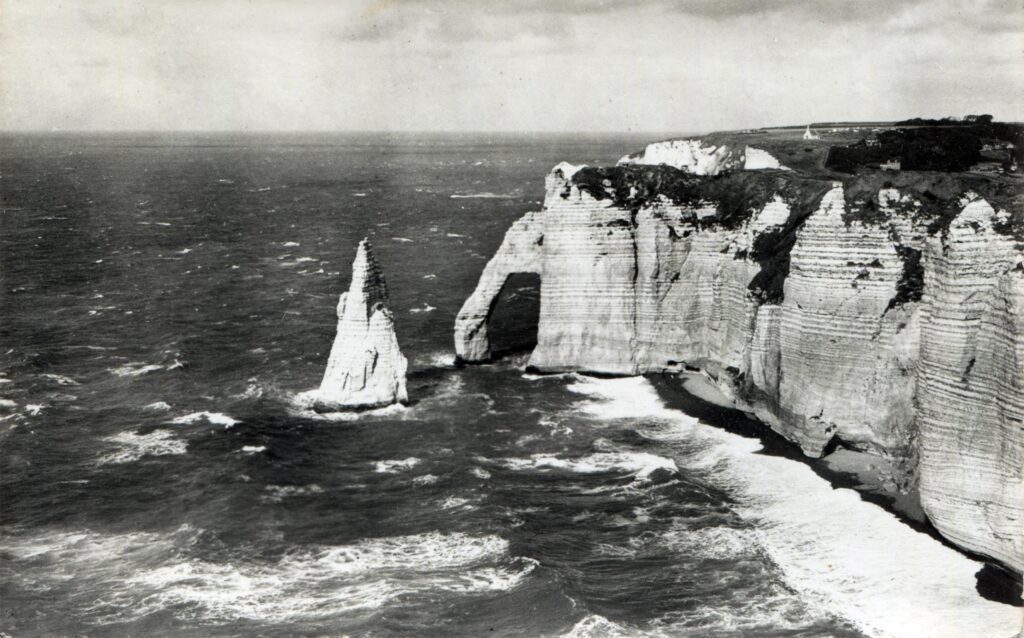Nature. Alabaster coast, from Dieppe to Le Havre. Fécamp and Etretat.
“From Dieppe to Le Havre, the coast is a continuous, sheer wall a hundred meters high. In places this high line of white rocks breaks, and a narrow valley with steep slopes covered with turf and reeds descends to the shore, ending, like a stream bed, in a deep hollow. In some places in these deep valleys, which serve as a refuge for the sea wind, there are also villages located on the slopes, ”so the wanderers-travelers once wrote, including Guy de Maupassant in their stories. The coast has been inhabited for a very long time. Archaeologists have found here Gallic settlements and even Danubian tribes three and a half thousand years before the birth of Christ. The names Fécamp and Dieppe were given by the Belgian tribes. Later, the Romans appeared in the III century. Christian bishop. Then there were monasteries and abbeys. In the ninth century Scandinavian Viking pirates invaded. After their compromises with the Carolingians, the Dukes of Normandy appeared. Then the Normans invaded England and vice versa. A land of shining swords and bitch of hooves, smoke, fire and blood… Finally, at the beginning of the 20th century, a tribe of artists invaded Normandy. The amazing beauty of nature revived the fashion for landscapes, the more easy it was to get from Honfleur. The first to draw rocks were Turner, Isabey, Bonington, then the “king of heaven” Eugene Boudin. The next invasion was made by Ione, Renoir and Berthe Morisot, and behind them the Fauvists Matisse, Marquet, Fries and Braque conquered the local coast. Georges Braque adored Varengeville-sur-Mer, where there is a park founded by Guillaume Malet with exotic plants. He also created stained glass windows for many local churches. Artists also adored the nearby town of Velles-les-Roses, which was once the battlefield of the Hundred Years War, but retained its main attractions – the church of St. Martin of the 16th century, the church of St. Nicholas and the chapel of the 12th century. writers. Victor Hugo himself visited here more than once. Once in 1874 there was also a famous artist Ilya Repin, who left his comments in letters to his homeland. “The field where the earth was still wet from the rain, the field road was full of flowers, huge ears covered the horizon, and white flakes of clouds floated in the sky.” Further, in his reviews it is written about the dead roar of the sea, the clear waters of a rivulet, clear as tears, which rotated mossy mill wheels…
The local resorts were very popular in the century before last. In the summer of 1872, the writer Ivan Turgenev and his family came to rest in Valery-sur-Somme and are being treated.
Etretat. The town of Etretat is also associated with Guy de Maupassant, artists, and exotic beach holidays. The landmarks of the coast are the rocks d’Amon, d’Daval, Guillemot and Cape Antifer. Guy de Maupassant spent his childhood here, and also where, at the end of his life, he built a house for himself. A quarter of his stories are devoted to this coast and the hard work of fishing. “Evening has fallen, and the fishermen pass in groups at the stone barrier, stepping heavily in their heavy fishing boots and wrapping their necks in woolen scarves; each has a liter bottle of moonshine in one hand, and a boat lantern in the other, ”he wrote. So much for “medieval herbal liqueurs” among the fishermen. His villa has survived and any tourist can see it. Attracts the attention of guests and a small castle, old mansions, and now hotels “Donjon” and “Villa”.

